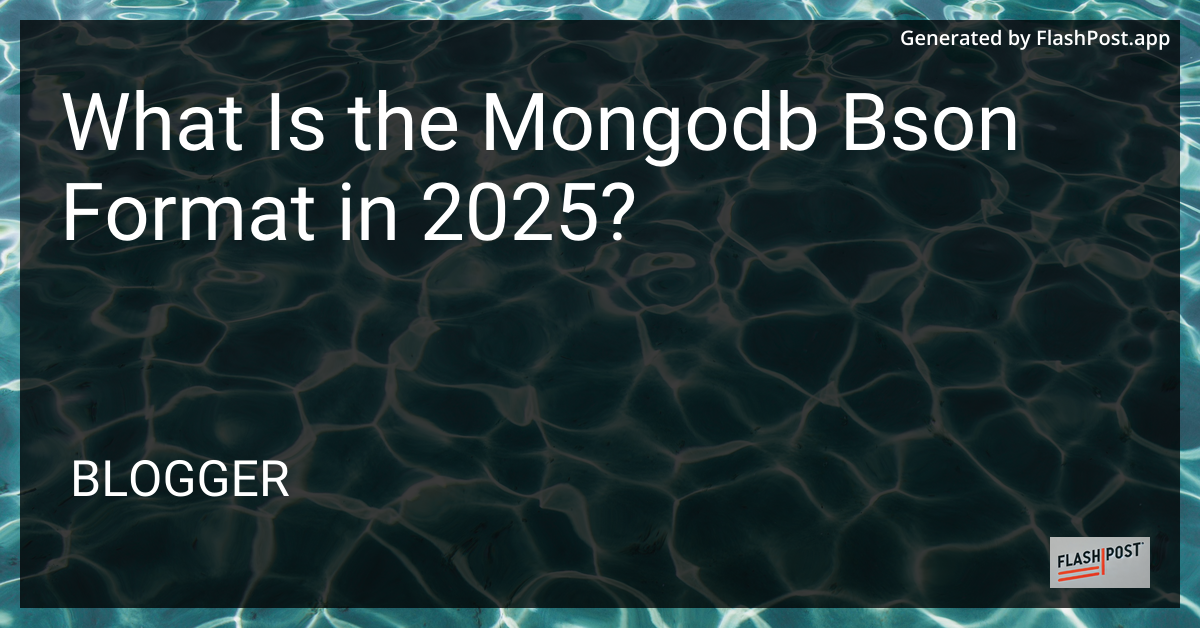What Is the Mongodb Bson Format in 2025?

Understanding the MongoDB BSON Format in 2025
When it comes to handling large datasets in NoSQL databases, MongoDB remains a preferred choice, thanks to its flexible schema and high performance. At the core of this flexibility is BSON, a binary data format with which MongoDB encodes JSON-like documents. As we step into 2025, understanding the nuances of BSON is crucial for developers and database administrators seeking optimal performance. This article breaks down the MongoDB BSON format and its relevance today.
What is BSON?
BSON, which stands for Binary JSON, is a binary-encoded serialization of JSON-like documents. The format is designed to be both lightweight and efficient, representing data types not typically supported by JSON. BSON’s efficiency ensures that it can be quickly traversed and decoded by applications, making it essential for high-performance requirements.
Key Features of BSON
Lightweight: Despite being binary, BSON is lightweight, minimizing the storage overhead compared to other data formats.
Scalability: BSON allows for seamless scaling of MongoDB by supporting rich and hierarchical data structures such as embedded arrays and documents, which can be queried efficiently. For detailed examples, refer to this guide on querying nested fields in MongoDB.
Type Flexibility: BSON supports a variety of data types that JSON does not natively support, such as dates and binary data, making it more versatile.
Indexable: BSON allows for easy indexing, which enhances the performance of database operations. Explore more about query optimization in MongoDB to boost efficiency.
Importance of BSON in 2025
As MongoDB continues to evolve, BSON remains an integral part of its ecosystem. In 2025, its continued relevance is driven by several factors:
Increased Data Complexity: With the explosion of IoT devices and complex web applications, BSON’s ability to serialize complex data types and structures is more important than ever.
Performance Demands: Modern applications demand quick data retrieval and manipulation, and BSON’s efficient binary structure ensures that these demands are met without compromising on speed.
Integration and Interoperability: As organizations increasingly adopt multi-database ecosystems, BSON acts as a bridge, ensuring seamless data exchanges between systems, including in scenarios requiring the joining of multiple collections.
Conclusion
In the rapidly changing data landscape of 2025, understanding MongoDB’s BSON format remains crucial for developers and database administrators. With its efficient, flexible, and scalable nature, BSON is poised to continue supporting the evolving demands of modern applications. As data requirements grow in complexity, leveraging BSON’s capabilities will be key to unlocking the full potential of MongoDB.
By staying updated with advancements in BSON and MongoDB, you can ensure that your applications operate with optimal performance and flexibility.
For more guidance on MongoDB and BSON, consider diving into resources like query optimization techniques and collection operations to expand your proficiency.
Comments
Post a Comment